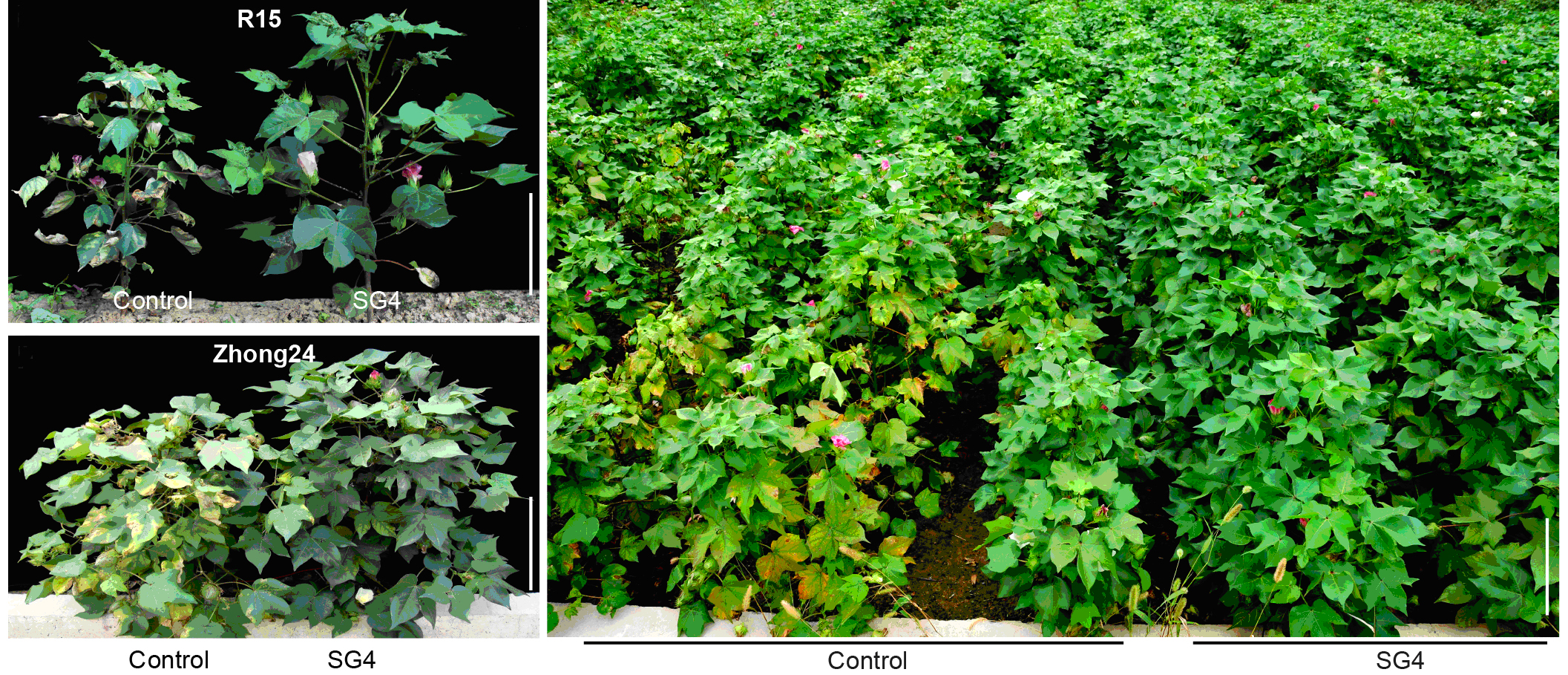博文
Solution to Control Cotton Verticillium Wilt Was Found
||
Verticillium dahliae Kleb., gained worldwide notoriety as a destructive plant pathogen, causing vascular wilt diseases on more than 400 plant species, including many important crops such as cotton, potato etc., and the annual global crop losses caused by this pathogen are estimated to reach over billions of dollars.
V. dahliae was firstly introduced to China through the importation of cotton seeds from the United Statesin 1930s and then widely spread throughout the country. The most recent severe outbreaks of Verticillium wilt nationwide occurred in 1993, 1995, and1996, which caused more than 100 million kilogram lint cotton losses each time. Currently, the acreage of Verticillium wilt infected cotton fields in China is around 2.5 million hectares annually, which is equivalent to ca. 50% of the cotton planting area in the country with direct economic losses of ca. 250-310 million U.S. dollars.
Gastrodia elata Bl. is a traditional Chinese medicinal herb with a recorded history of more than 1,000 years in China. The achlorophyllous corms of G. elata grow underground and lead to a symbiotic life with several fungi, in particular Armillariamellea, throughout its life cycle. G.elata depends on A. mellea to provide essential nutrients, and conversely it evolved an effective defense system to prevent super infection of the symbiotic fungi, which mainly attributed to the existence of GAFPs (also known as gastrodianin), a kind of small alkaline protein specifically localized in epidermal or cortical parenchyma cells.
Through the study of Gastrodia antifungal protein family, which is critical for the Gastrodia elata-Armillaria mellea symbiosis, we has brought GAFPs into upland cotton (Gossypium hirsutum L., the main cultivated cultivars), and showed that GAFP4, one of the GAFP members, displays the strongest Verticillium wilt resistance both in vitro and in vivo. In collobration of scientists from Chinese Agricultural Academy of Sciences, we further demonstrated the GAFP4 transgenic cotton greatly enhanced resistance to Verticillium wilt in the 3-year field trials of three different disease nurseries across China, and thus resulting in a significant 20.7% to 51.73% fiber yield increase.
The immense losses caused by V. dahliae make this pathogen the major obstacle to cotton production. However, disease control towards Verticillium wilt is extremely difficult, since V. dahliae is persistent in the soil, which can survive for more than 10 years even in the absence of hosts and no fungicide so far is available to cure commercial upland cotton once infected. Breeding of broad-spectrum resistant cultivars is therefore considered to be one of the most effective approaches, unfortunately, the lack of genetic resources as well as effective target genes for use in genetic engineering strongly limited this breeding effort. Consequently, all attempts at breeding cultivars with high resistance to Verticillium wilt have not been successful so far, therefore, Verticillium wilt is thus regarded as ‘the cancer of cotton’.
Insect-resistant cotton is currently one of the most widely grown genetically modified (GM) plants and the introduction of Bacillus thuringiensis (Bt) toxin gene effectively solved the harm of cotton boll worm. However, none of such powerful gene is deployed to date to prevent or cure cotton fungal diseases such as Verticillium wilt so far, our results suggest that GAFP4 is a powerful candidate for genetic engineering in control of cotton Verticillium wilt disease.
The study entitled “Significant Improvement of Cotton Verticillium Wilt Resistance by Manipulating the Expression of Gastrodia Antifungal Proteins” was just published online on July 1, 2016 in Molecular Plant (DOI:10.1016/j.molp.2016.06.013). This work is supported by grants from Transgenic Plant Research of the Ministry of Agriculture of China and National Natural Science Foundation of China.
Figure legend: GAFP4 transgenic cotton showed enhance diease resistance to Verticillium wilt. R15 and Zhong24 are two upland cotton cultivars. SG4, GAFP4 transgenic cotton.
Contact person: Dr. Chengcai Chu
Institute of Genetics and Developmental Biology,Chinese Academy of Sciences (CAS)
No. 1 West Beichen Road, Chaoyang District
Beijing 100101, China
email: ccchu@genetics.ac.cn
website: http://chulab.genetics.ac.cn
ResearchGate: https://www.researchgate.net/profile/Chengcai_Chu
https://blog.sciencenet.cn/blog-2351-988937.html
上一篇:王义琴博士Molecular Plant文章有望解决棉花的癌症——黄萎病
下一篇:汪鸿儒博士的 Molecular Plant 封面文章
